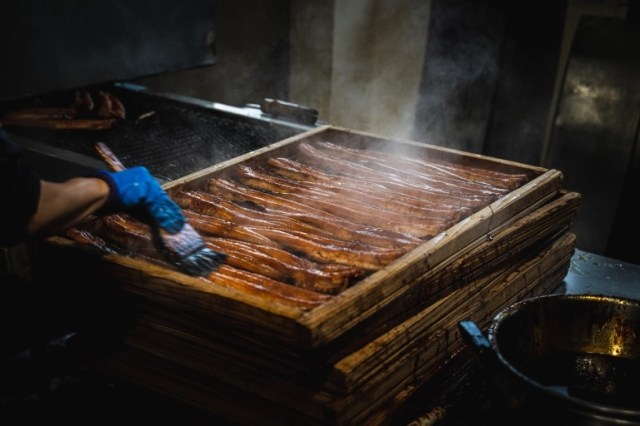
Getting hungry and knowledgeable on a visit to Japan’s number-one anago prefecture.
While travelling trough Shimane Prefecture, on the northern side of the western tip of Japan’s main island of Hokkaido, our Japanese-language reporter Tasuku Egawa stepped into a restaurant for lunch. As he looked over the menu, he noticed a large number of anago (conger eel) dishes, so he figured he’d order a few…
…and they were all amazingly delicious.
Really, though, Tasuku should have seen this coming. Shimane now catches more anago than any other prefecture in Japan, and it’s becoming one of the area’s representative foodstuffs. The Shimane cities of Hamada and Ota, in particular, are gaining fame among foodies looking for tasty anago, and both towns’ tourism departments now promote local restaurants that specialize in it.
So Tasuku decided to go deeper into the world of Shimane anago by visiting Murata Gyoson, a Hamada company that runs an Anago processing center.
▼ Murata Gyoson
“Processing center” might have you imagining a lot of industrial robots whirring about, but much of the work of cleaning and preparing anago is still handled in a traditional, old-school way here. As Tasuku entered the building and walked past the shipping dock, he saw wooden crates filled with whole anago which had just been purchased at auction that morning.
▼ Prices vary by the day, but a crate typically sells for somewhere between 15,000 and 25,000 yen (US$116-US$194).
Once the anago are removed from the crates, a worker starts filleting them by hand with a knife.
One of the most popular ways to cook anago is kabayaki, in which the eel is treated with a sweet soy-based glaze. So after fileting them, Murata Gyoson brushes them with the sauce and puts them on the conveyor grill of its kabayaki machine.
This isn’t a “set it and forget it” process, though. Workers carefully adjust the strength of the flames so that each fillet is properly cooked but not burned, preserving its flavor and moistness.
Once they’re cooked, the filets are given an additional brushing of glaze…
…and packaged for shipping.
But as he watched the mouthwatering start-to-finish kabayaki process, Tasuku noticed something else. As the worker sliced the anago, she separated some of the pieces into separate piles.
That’s because not all of Murata Gyoson’s ends up as kabayaki. Large anago that are judged to be of especially high quality instead become shirayaki anago, lightly grilled without glaze so that the natural flavor plays a larger role.
▼ Shirayaki
Beyond shirayakai, the largest, most pristine pieces of anago have the exalted fate of being used for ni-anago, parboiled eel.
So this got Tasuku wondering: How do you determine how high the quality of anago before actually taking a bite of it? Thankfully, Murata Gyoson was happy to provide some handy pointers that you can use the next time you’re picking out anago at the grocery store or fish market.
1. Check the eyes. This pretty much goes for all seafood, but the clearer and brighter the eyes are, the fresher the anago is.
▼ Having just been caught that morning, this anago’s eyes mark it as especially fresh.
2. Go for the gold (skin color). At a glance, most people would say anago are silver, white, or gray. If you’re looking at a really fresh, high-quality example, though, the skin will have a golden shine to it, like in the photo here.
3. Compared to the first two visual checks, this one can be kind of hard to determine if you haven’t spent a lot of time looking at eels, but high-quality anago has a tight, firm stomach. The looser and flabbier the belly, the more likely it is that the anago has had some damage to its internal organs, which can make the flavor of its meat gamey. Softer-stomached anago are also more likely to have lived their lives in warmer waters, where the type of prey available for them to have fed on can also contribute to gaminess.
▼ Firm-stomached anago
4. And last, once the anago is fileted, you can tell higher-quality meat by its color. Average-quality anago will have red or yellow hues to it…
…but top-notch anago will be white, like this.
Armed with this knowledge, Tasuku now feels more confident in being able to select the tastiest anago out of his options at the supermarket, and also in choosing how to cook it. Still, it’s going to be hard to beat professionally prepared caught-that-day anago, so he knows what he’ll be ordering when eating out on his next trip to Shimane.
Related: Murata Gyoson
Photos ©SoraNews24
● Want to hear about SoraNews24’s latest articles as soon as they’re published? Follow us on Facebook and Twitter!
[ Read in Japanese ]

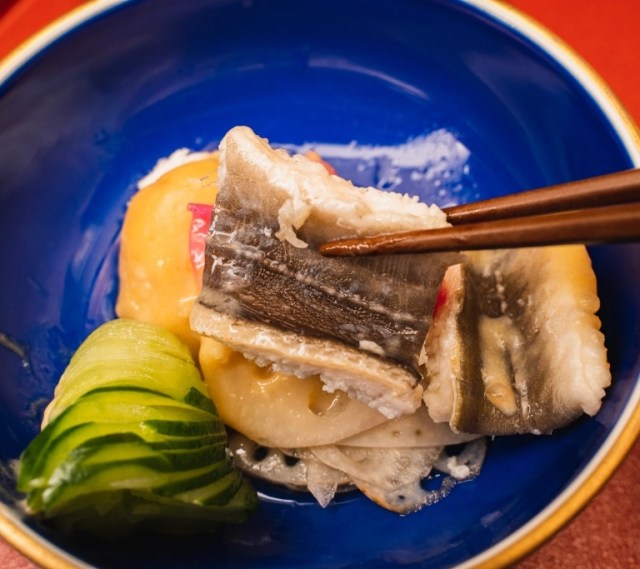
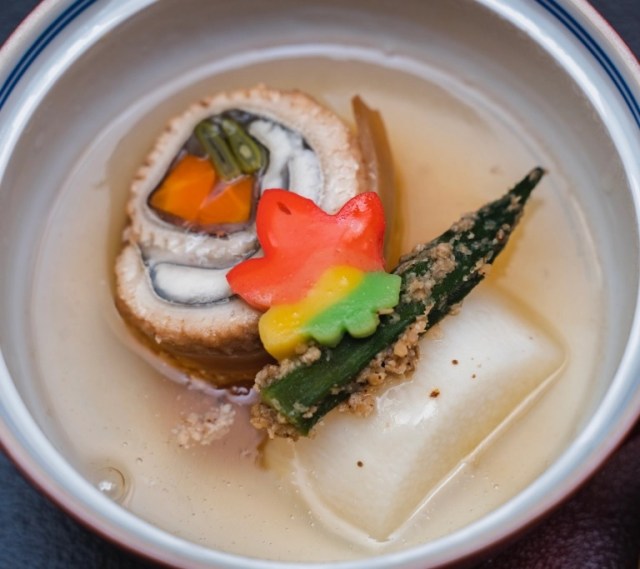
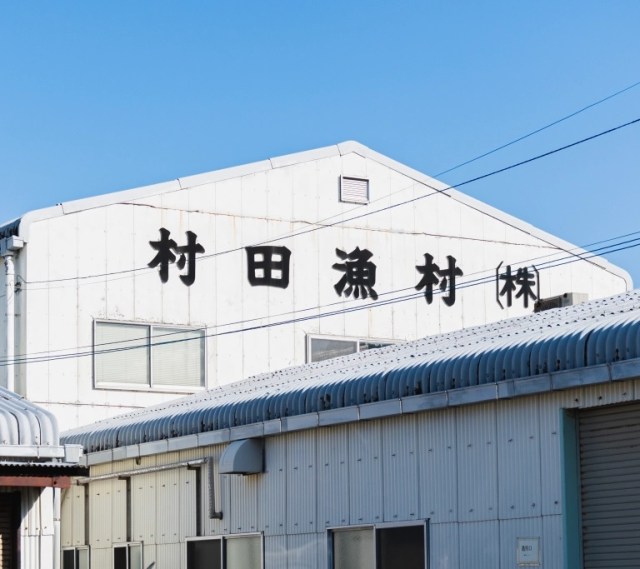
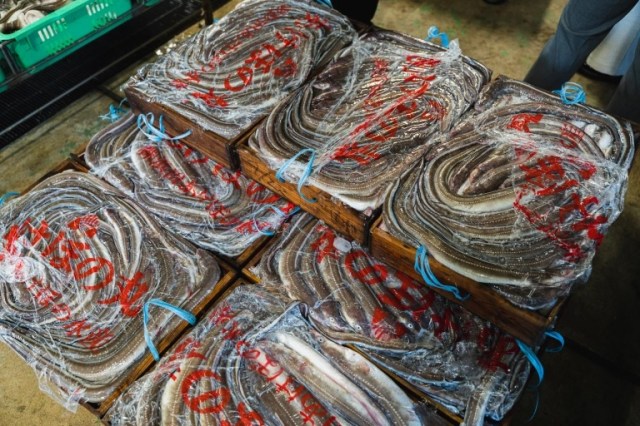
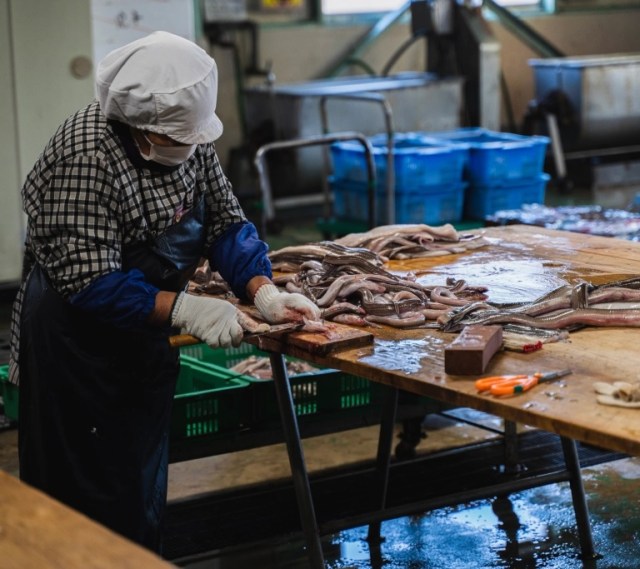

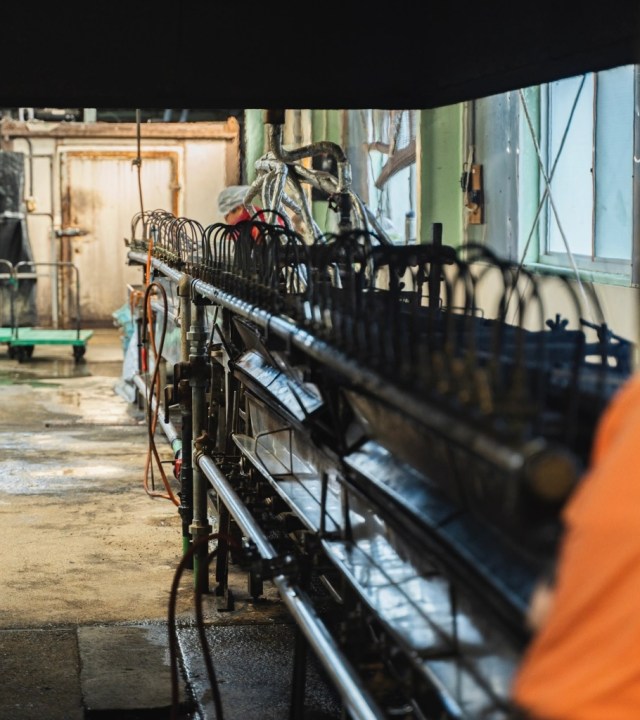

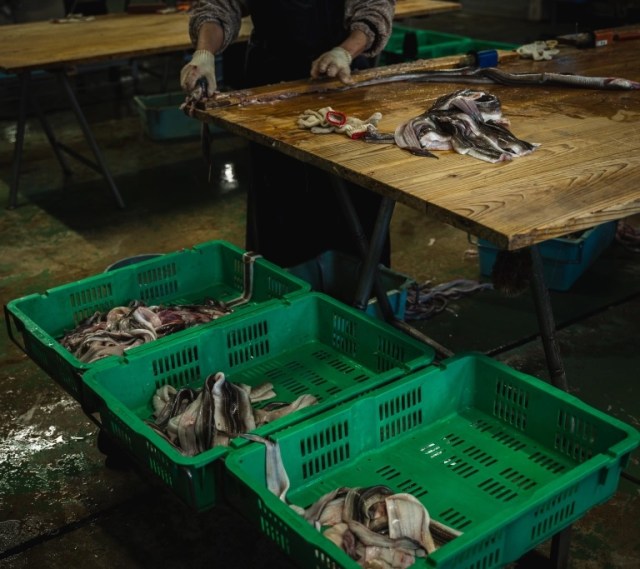
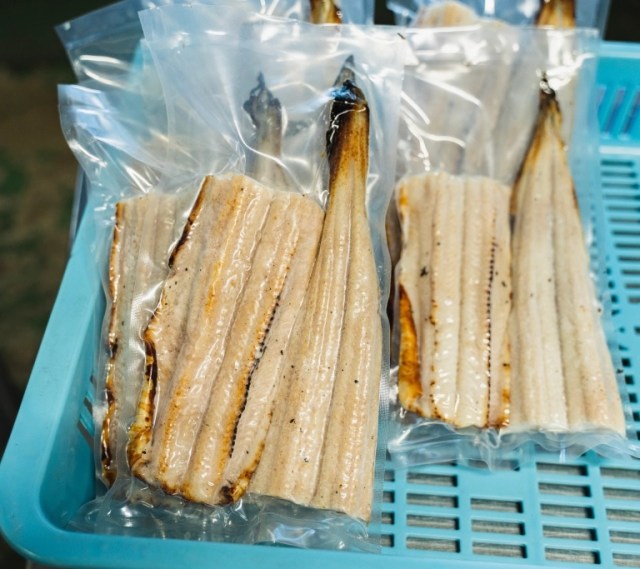
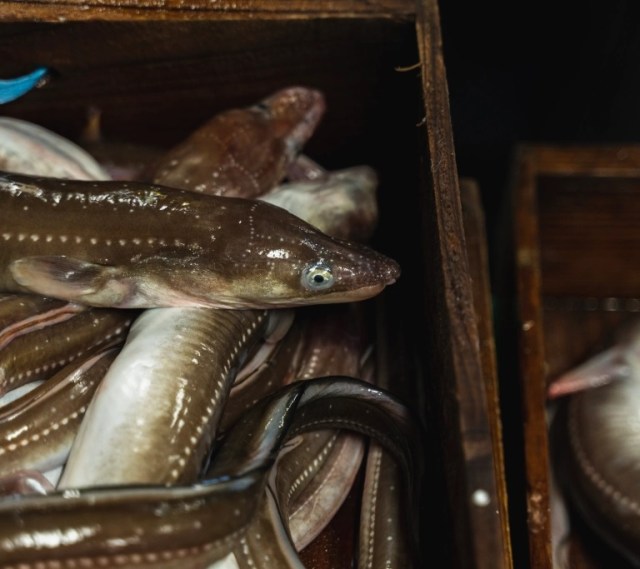
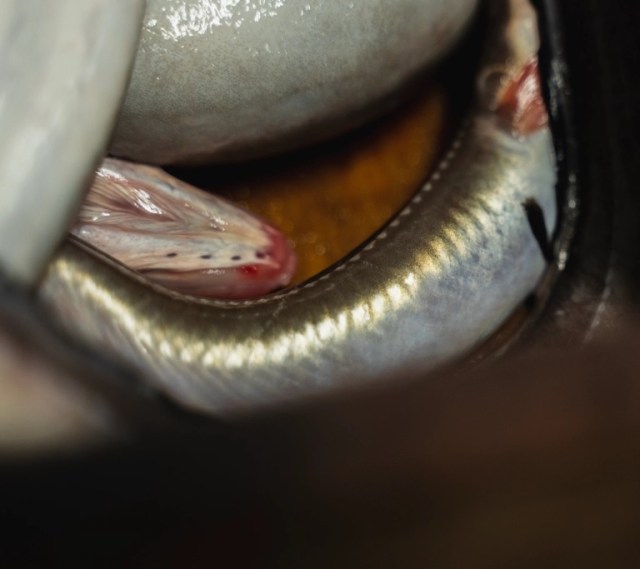
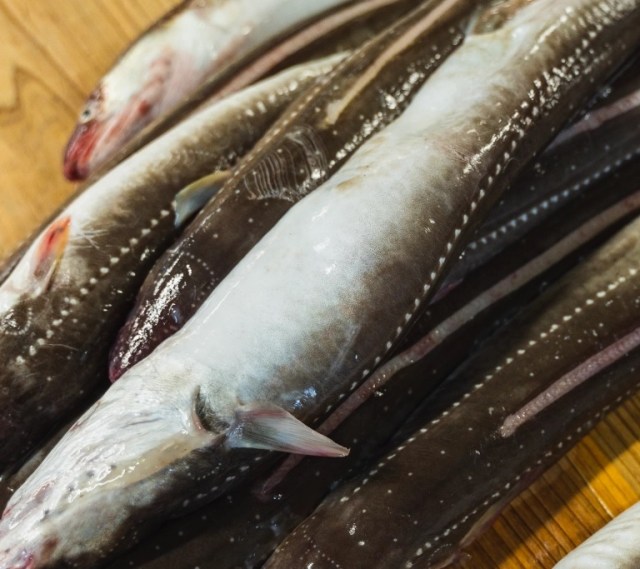
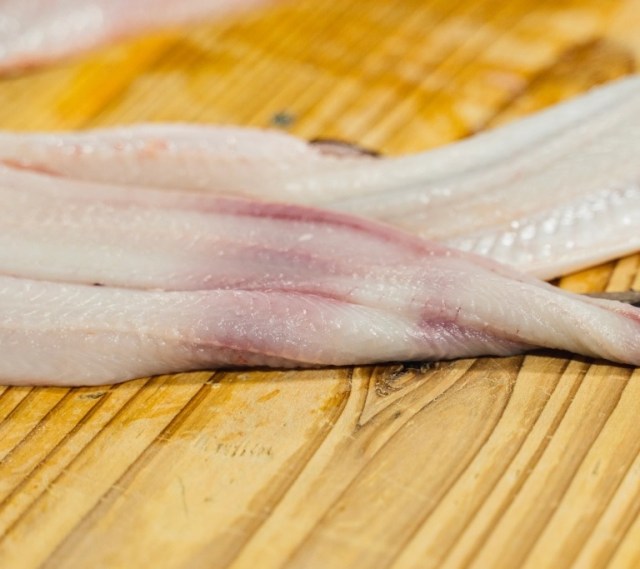
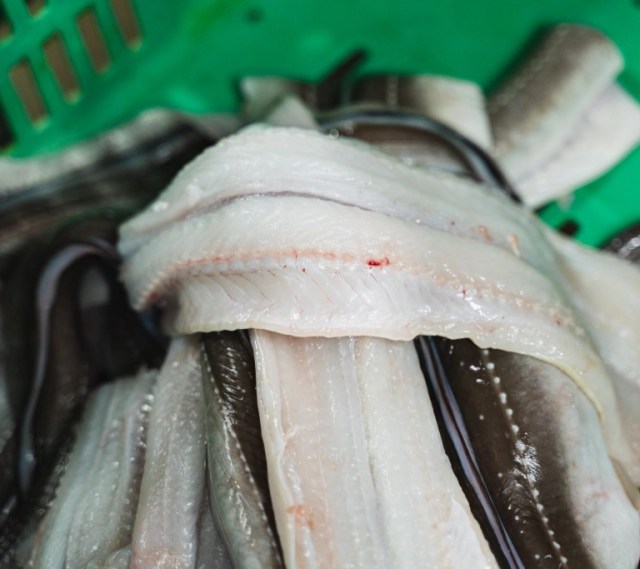
 Which Japanese conveyor belt sushi chain has the best saltwater eel sushi?【Taste test】
Which Japanese conveyor belt sushi chain has the best saltwater eel sushi?【Taste test】 Which Japanese conveyor belt sushi chain has the best hamburger steak sushi?【Taste test】
Which Japanese conveyor belt sushi chain has the best hamburger steak sushi?【Taste test】 Who’s got the best, cheapest one-person sushi delivery in downtown Tokyo? Mr. Sato investigates!
Who’s got the best, cheapest one-person sushi delivery in downtown Tokyo? Mr. Sato investigates! Tokyo restaurant offers “DIY Tempura Bowls,” so of course we had to go check it out
Tokyo restaurant offers “DIY Tempura Bowls,” so of course we had to go check it out Gang of “yakuza deer” regularly takes over Japanese restaurant’s street-side entrance【Photos】
Gang of “yakuza deer” regularly takes over Japanese restaurant’s street-side entrance【Photos】 Foreigner’s request for help in Tokyo makes us sad for the state of society
Foreigner’s request for help in Tokyo makes us sad for the state of society Seaside scenery, history, and so many desserts on Yokohama’s Akai Kutsu【Japan Loop Buses】
Seaside scenery, history, and so many desserts on Yokohama’s Akai Kutsu【Japan Loop Buses】 Japanese city loses residents’ personal data, which was on paper being transported on a windy day
Japanese city loses residents’ personal data, which was on paper being transported on a windy day Should you add tartar sauce to Japanese curry rice? CoCo Ichi makes diners an unusual offer
Should you add tartar sauce to Japanese curry rice? CoCo Ichi makes diners an unusual offer Harajuku Station’s beautiful old wooden building is set to return, with a new complex around it
Harajuku Station’s beautiful old wooden building is set to return, with a new complex around it Akihabara pop-up shop sells goods made by Japanese prison inmates
Akihabara pop-up shop sells goods made by Japanese prison inmates Red light district sushi restaurant in Tokyo shows us just how wrong we were about it
Red light district sushi restaurant in Tokyo shows us just how wrong we were about it French Fries Bread in Tokyo’s Shibuya becomes a hit on social media
French Fries Bread in Tokyo’s Shibuya becomes a hit on social media Ghibli Park now selling “Grilled Frogs” from food cart in Valley of Witches
Ghibli Park now selling “Grilled Frogs” from food cart in Valley of Witches McDonald’s Japan releases a pancake pie for new retro kissaten coffeeshop series
McDonald’s Japan releases a pancake pie for new retro kissaten coffeeshop series McDonald’s new Happy Meals offer up cute and practical Sanrio lifestyle goods
McDonald’s new Happy Meals offer up cute and practical Sanrio lifestyle goods Japanese ramen restaurants under pressure from new yen banknotes
Japanese ramen restaurants under pressure from new yen banknotes Studio Ghibli releases new action figures featuring Nausicaä of the Valley of the Wind characters
Studio Ghibli releases new action figures featuring Nausicaä of the Valley of the Wind characters New private rooms on Tokaido Shinkansen change the way we travel from Tokyo to Kyoto
New private rooms on Tokaido Shinkansen change the way we travel from Tokyo to Kyoto Tokyo Tsukiji fish market site to be redeveloped with 50,000-seat stadium, hotel, shopping center
Tokyo Tsukiji fish market site to be redeveloped with 50,000-seat stadium, hotel, shopping center All-you-can-drink Starbucks and amazing views part of Tokyo’s new 170 meter-high sky lounge
All-you-can-drink Starbucks and amazing views part of Tokyo’s new 170 meter-high sky lounge Beautiful Ghibli sealing wax kits let you create accessories and elegant letter decorations【Pics】
Beautiful Ghibli sealing wax kits let you create accessories and elegant letter decorations【Pics】 Studio Ghibli releases Kiki’s Delivery Service chocolate cake pouches in Japan
Studio Ghibli releases Kiki’s Delivery Service chocolate cake pouches in Japan New definition of “Japanese whiskey” goes into effect to prevent fakes from fooling overseas buyers
New definition of “Japanese whiskey” goes into effect to prevent fakes from fooling overseas buyers Our Japanese reporter visits Costco in the U.S., finds super American and very Japanese things
Our Japanese reporter visits Costco in the U.S., finds super American and very Japanese things Studio Ghibli unveils Mother’s Day gift set that captures the love in My Neighbour Totoro
Studio Ghibli unveils Mother’s Day gift set that captures the love in My Neighbour Totoro More foreign tourists than ever before in history visited Japan last month
More foreign tourists than ever before in history visited Japan last month New Pokémon cakes let you eat your way through Pikachu and all the Eevee evolutions
New Pokémon cakes let you eat your way through Pikachu and all the Eevee evolutions Sales of Japan’s most convenient train ticket/shopping payment cards suspended indefinitely
Sales of Japan’s most convenient train ticket/shopping payment cards suspended indefinitely Sold-out Studio Ghibli desktop humidifiers are back so Totoro can help you through the dry season
Sold-out Studio Ghibli desktop humidifiers are back so Totoro can help you through the dry season Japanese government to make first change to romanization spelling rules since the 1950s
Japanese government to make first change to romanization spelling rules since the 1950s Ghibli founders Toshio Suzuki and Hayao Miyazaki contribute to Japanese whisky Totoro label design
Ghibli founders Toshio Suzuki and Hayao Miyazaki contribute to Japanese whisky Totoro label design Doraemon found buried at sea as scene from 1993 anime becomes real life【Photos】
Doraemon found buried at sea as scene from 1993 anime becomes real life【Photos】 Tokyo’s most famous Starbucks is closed
Tokyo’s most famous Starbucks is closed One Piece characters’ nationalities revealed, but fans have mixed opinions
One Piece characters’ nationalities revealed, but fans have mixed opinions We asked a Uniqlo employee what four things we should buy and their suggestions didn’t disappoint
We asked a Uniqlo employee what four things we should buy and their suggestions didn’t disappoint Princesses, fruits, and blacksmiths: Study reveals the 30 most unusual family names in Japan
Princesses, fruits, and blacksmiths: Study reveals the 30 most unusual family names in Japan Japanese-style Rilakkuma teahouse opens in one of the most beautiful places in Japan
Japanese-style Rilakkuma teahouse opens in one of the most beautiful places in Japan Japan develops special sushi for pregnant women
Japan develops special sushi for pregnant women We try vegetarian sushi at Tokyo’s newest sushi train restaurant 【Pics & Taste Test】
We try vegetarian sushi at Tokyo’s newest sushi train restaurant 【Pics & Taste Test】 Japan super budget dining – What’s the best way to spend 1,000 yen at sushi restaurant Sushiro?
Japan super budget dining – What’s the best way to spend 1,000 yen at sushi restaurant Sushiro? What’s it like to eat eel from a Japanese vending machine?
What’s it like to eat eel from a Japanese vending machine? We tour Onomichi, Hiroshima, where old meets new and a whole lot more
We tour Onomichi, Hiroshima, where old meets new and a whole lot more The ultimate Shinkansen trip: Riding Japan’s bullet train network from one end to the other
The ultimate Shinkansen trip: Riding Japan’s bullet train network from one end to the other We tried every single flavor of Mister Donut’s Belgian chocolatier collab donuts【Taste test】
We tried every single flavor of Mister Donut’s Belgian chocolatier collab donuts【Taste test】 We learned how to make a calligraphy brush from the masters of Kumanofude in Hiroshima
We learned how to make a calligraphy brush from the masters of Kumanofude in Hiroshima Can Japan’s one-person granite plate cooker take you to solo stone steak paradise? Let’s find out
Can Japan’s one-person granite plate cooker take you to solo stone steak paradise? Let’s find out We try Matsuya’s beef stroganoff, only available at select spots, and learn a bit about Matsuya
We try Matsuya’s beef stroganoff, only available at select spots, and learn a bit about Matsuya Trying out First Kitchen’s tsukimi mochi burgers for a taste of Japanese autumn
Trying out First Kitchen’s tsukimi mochi burgers for a taste of Japanese autumn Tokyo Station’s second-most popular bento is great because of what it isn’t【Taste test】
Tokyo Station’s second-most popular bento is great because of what it isn’t【Taste test】 Taste-testing every single sakura sweet and cherry blossom drink we could find at Mujirushi
Taste-testing every single sakura sweet and cherry blossom drink we could find at Mujirushi Our Japanese-language reporter tries eel cola so you don’t have to 【Taste Test】
Our Japanese-language reporter tries eel cola so you don’t have to 【Taste Test】 Bacon soda’s new contender is here – Say hello to unagi cola!
Bacon soda’s new contender is here – Say hello to unagi cola! We tried super spicy wasabi ramen and yakisoba that’s rumored to make anyone cry【Taste Test】
We tried super spicy wasabi ramen and yakisoba that’s rumored to make anyone cry【Taste Test】
Leave a Reply